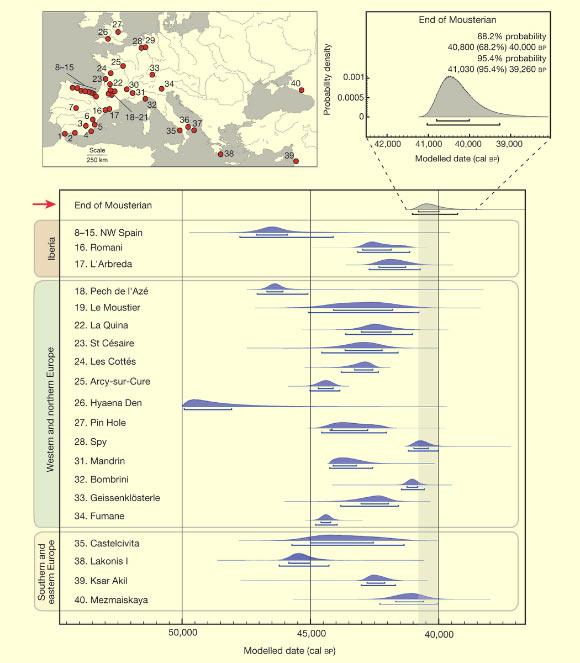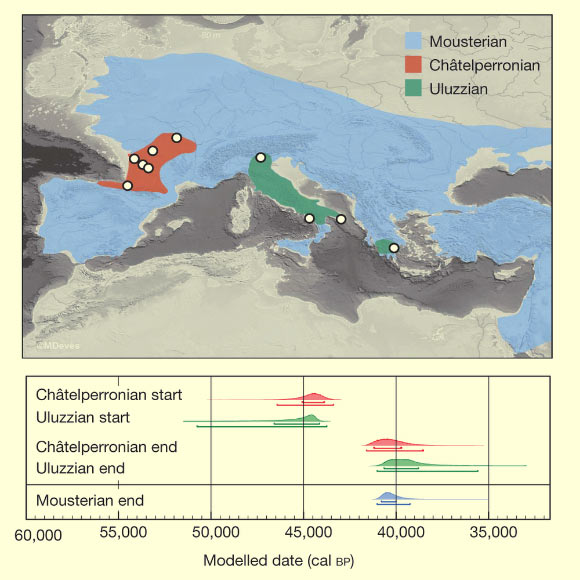Anatomically modern humans and Neanderthals were both living in Europe for up to 5,400 years, says a new study conducted by Oxford University researcher Prof Thomas Higham and his colleagues.

Neanderthal. Image credit: Trustees of the Natural History Museum, London.
Prof Higham’s team obtained new radiocarbon dates for around 200 samples from 40 Paleolithic sites, ranging from Russia to Spain.
The sites were either linked with the Neanderthal tool-making industry, known as Mousterian, or were transitional sites containing stone tools associated with either early modern humans or Neanderthals (Uluzzian and Châtelperronian cultures).
The scientists combined the new radiocarbon dates with established archaeological stratigraphic evidence to construct a robust timeline showing when the last Neanderthals died out.
“We believe we now have the first robust timeline that sheds new light on some of the key questions around the possible interactions between Neanderthals and modern humans,” Prof Higham, who is the lead author of the paper published in Nature.
The chronology shows that Neanderthals coexisted with anatomically modern humans for a significant period, up to 5,400 years long, giving ‘ample time’ for the transmission of cultural and symbolic behaviors as well as possible genetic interbreeding between the two groups.

Locations and final boundary age ranges for the 40 sites analyzed by Prof Thomas Higham and his colleagues. Image credit: Tom Higham et al.
Under the new timeline, the Mousterian industry is shown to have ended between 41,030 to 39,260 years ago.
Previous studies had suggested that the Iberian Peninsula and the site of Gorham’s Cave in Gibraltar might have been the final places in Europe where Neanderthals survived. Despite extensive dating work, the Prof Higham’s team could not confirm the previous dates.
“Previous radiocarbon dates have often underestimated the age of samples from sites associated with Neanderthals because the organic matter was contaminated with modern particles,” Prof Higham said.

Geographic distribution of Châtelperronian, Uluzzian and Mousterian cultures, and age ranges for the start and end of the Châtelperronian and Uluzzian cultures, the Mousterian end boundary is shown for comparison. Image credit: Tom Higham et al.
“We used ultrafiltration methods, which purify the extracted collagen from bone, to avoid the risk of modern contamination.”
“This means we can say with more confidence that we have finally resolved the timing of the disappearance of our close cousins, the Neanderthals.”
The new timeline also suggests that Neanderthals disappeared at different times across Europe rather than being rapidly replaced by modern humans.
_____
Tom Higham et al. 2014. The timing and spatiotemporal patterning of Neanderthal disappearance. Nature 512, 306–309; doi: 10.1038/nature13621







